The Future Impact of 3D Printed Food on Southeast Asia
)
3D printing food, similarly to any other type of 3D printing, involves creating physical versions of digital objects layer by layer – the difference being the use of edible ingredients. It has begun to gain momentum globally and will have a transformative effect on the supply chains of Southeast Asia, a region defined by its diversity of cuisine and culture.
Some of these impacts will include:
- Reduced Supply Chain Complexity
- 3D printing foods allows for increased local production, reducing the need for long-distance transportation and refrigeration of perishable goods.
- Customisation to Local Tastes
- 3D printing allows for precise control over the composition and structure of food. It can be tailored to meet the nutritional and dietary requirements of individuals and offers the potential for a highly personalised dining experience. This is especially important in the diverse culinary world of Southeast Asia.
- Sustainability
- Traditional food production often results in significant food waste and resource consumption. 3D printing can optimise ingredient usage, reducing food waste and environmental impact while extending products' shelf lives.
- Accessibility
- As the practice becomes commonplace and prices reduce, 3D printing food will potentially address issues of food security and malnutrition by providing nutritious, shelf-stable food that is easy to distribute, even in remote areas.
- Nutrition Enhancement
- 3D printing enables the incorporation of essential nutrients and vitamins into food, combatting malnutrition and improving the population's overall health.
This is becoming especially important in a region where more than 1.1 billion people lacked access to adequate food in 2021, a number increasing as the population continues to grow (Southeast Asia’s population is projected to increase by upwards of 700 million in the next 30 years). The widening income gaps and supply chain disruptions will increase the need for easy access to healthy foods over this time, which is where 3D printing will be at its most important in feeding more people with fewer resources.
Case Study – Anrich3D: Mathematically Healthy Food
 Look no further than Anrich3D, a Singapore-based 3D food printing firm, for a peek into the future of food. Founded on the idea of using technology to make healthier choices, Anrich3d’s goal is to overcome the information overload involved in the many apps and services out there that provide nutrition advice, taking issue with the difficulty of finding the correct ingredients and preparing them the right way. Anrich3d is looking to remove the human error portion of healthy eating by providing 3D printed meals produced at scale.
Look no further than Anrich3D, a Singapore-based 3D food printing firm, for a peek into the future of food. Founded on the idea of using technology to make healthier choices, Anrich3d’s goal is to overcome the information overload involved in the many apps and services out there that provide nutrition advice, taking issue with the difficulty of finding the correct ingredients and preparing them the right way. Anrich3d is looking to remove the human error portion of healthy eating by providing 3D printed meals produced at scale.
On this, founder Anirudh Agarwal says “With enough information you can always optimize for whatever is the best thing for you to eat, but it’s not humanly possible to always do the calculations or record all the data. Machines are a lot better at doing the calculations and measurements.”
Anirudh sees the control and customization available within 3D printing as the best way to ensure you can get a fully balanced meal with as many ingredients as you want, while it is still mathematically optimized for you.
There are still challenges involved in producing this food at scale, according to Anirudh, but surprisingly public perception has not been an issue in Southeast Asia, even with the cultural and culinary history of the region, and it’s response has been overall “very positive”.
Anrich3d’s plans for the first release of its products surround hospitals and care facilities, providing simple, efficient and sustainable food to those most in need of nutritional balance. As they move from there, the most important part of the process will be about moving the idea of 3D-printing food away from something novel, and towards it being seen as something more common and easily accessible.
In terms of its impact on the supply chain, Anrich3d are looking to offer multiple options to consumers, including:
- Pre-printed food delivered to customer’s doors
- Premade paste to be used in a printer at home or in business
- Paste recipes and instructional content
This provides options depending on the availability of 3D-printing in the region, while by pre-printing the food they will remove the perishable element of transport, reducing the complexity of the overall supply chain for these products.
The Challenges Involved in 3D Printing
Although 3D printing represents the future of the edible supply chain, it’s widespread adoption in Southeast Asia still faces several hurdles, including:
- Cost
- 3D printing is still expensive, and scaling it down to meet local needs is still a major financial investment. As the technology becomes more widely adopted, the price point will reduce.
- Regulations
- Official food safety regulations have not yet evolved to accommodate 3D printed food, so a standardized safety and quality is not yet assured.
- Cultural Acceptance
- Convincing communities to adopt a technology-driven approach to food will be challenging throughout Southeast Asia, as traditional cuisine and culinary practices are deeply ingrained in many regions
As a region defined by its love of food and the diversity of its flavors, 3D printing food is poised to revolutionize the supply chain of Southeast Asia, addressing key issues surrounding food security, sustainability, customization and more.
Moving into the future, addressing the challenges and fine-tuning the benefits will be critical in unlocking its full potential. To learn more about 3D printing food, and become a part of this ongoing process, Click here to pre-register for free to CeMAT Southeast Asia, taking place on May 15 – 17 at Singapore EXPO, Singapore.






